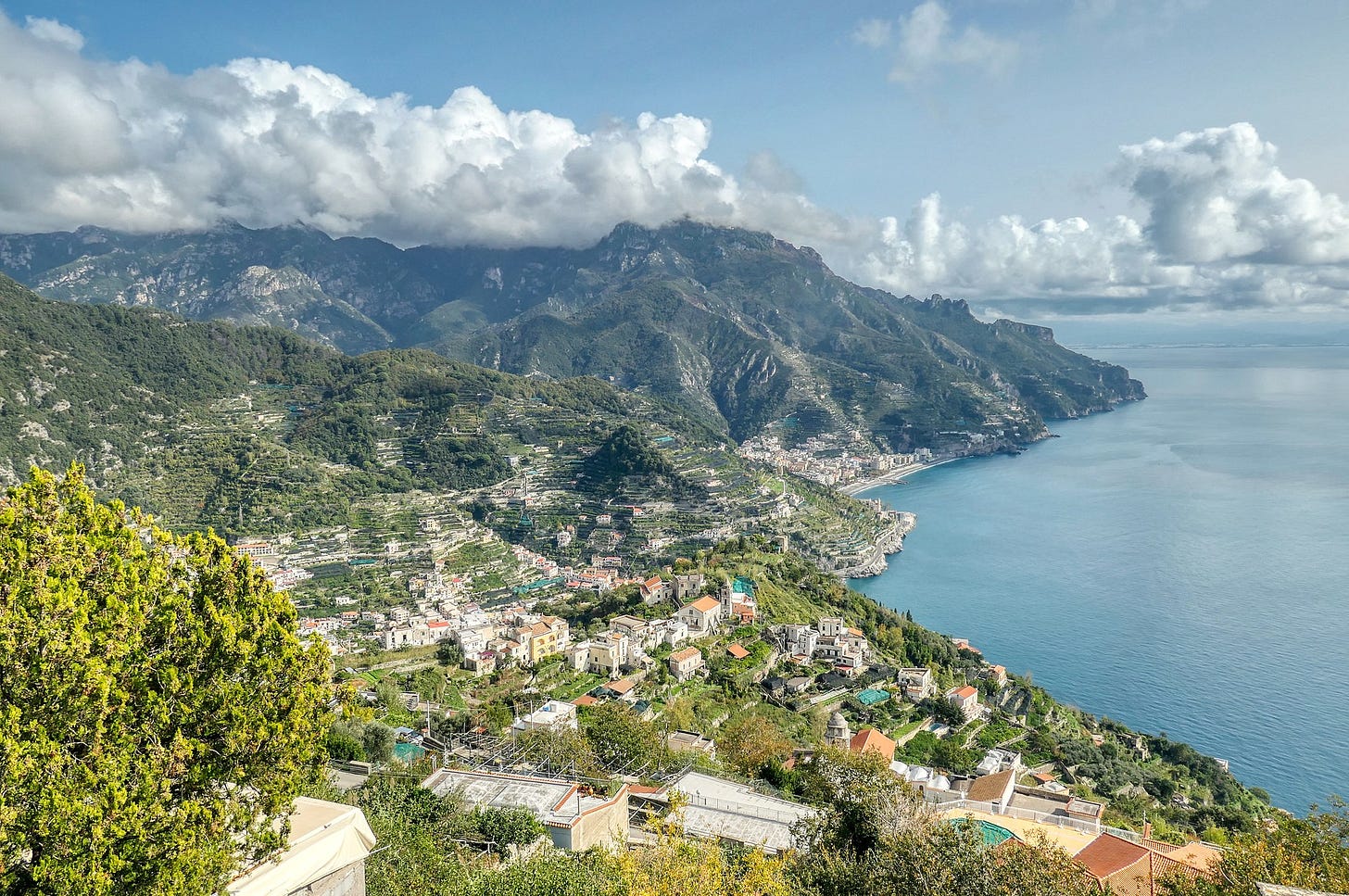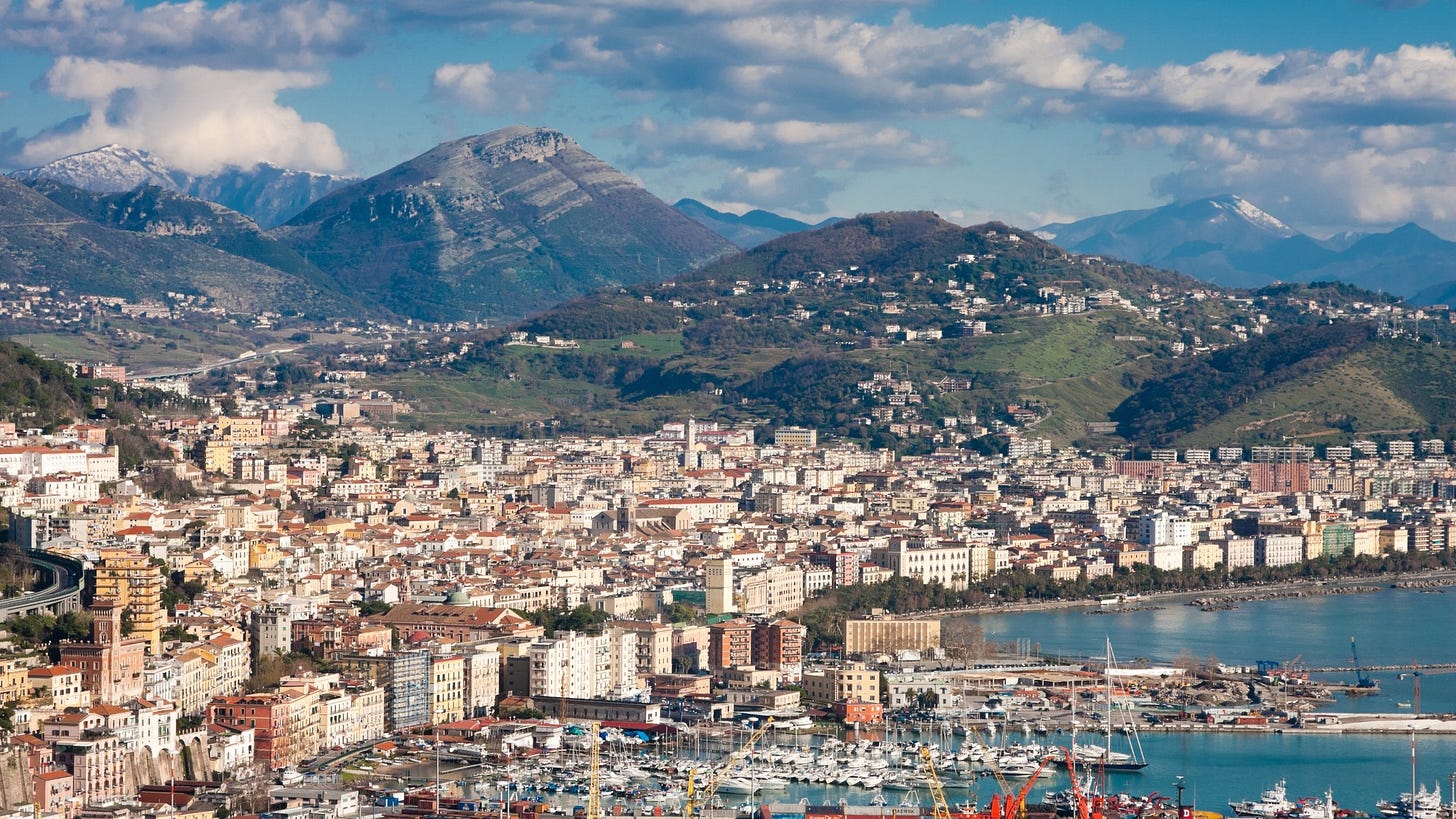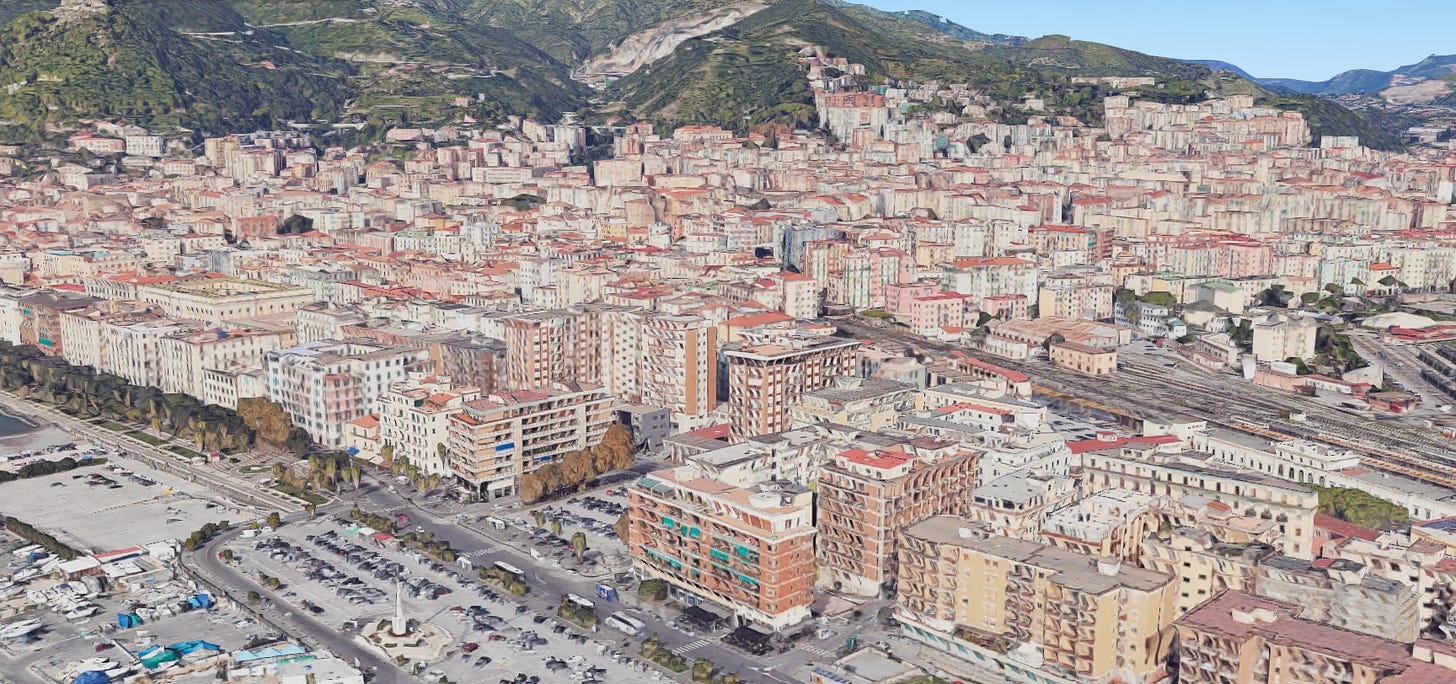The Puzzle of Historical Preservation
Pretty old buildings
Buildings of rough-hewn stone blocks mortared with volcanic ash stack up on a mountainside made of the same stone and ash. Bright plaster and clay-orange rooftops face sapphire water and short stony beaches.
This is the town of Amalfi, south of Naples, Italy. It is one of the most popular tourist destinations in the world and a UNESCO heritage site. The street patterns and many of the buildings were built hundreds of years ago between the 10th and 12th centuries when Amalfi rivaled Venice and Genoa as a maritime power and merchant republic, or else by enterprising hoteliers in the 18th and 19th centuries.
Unsurprisingly, construction in Amalfi is strictly regulated. Nothing new can be built there. Renovations are sparingly permitted, but they are only allowed to restore buildings to their historical size and form, no extensions or design changes are allowed.
In contrast to the present spirit of ordered preservation, Amalfi was built in a completely uncontrolled, unplanned, decentralized way by pirates, Arabs, and merchants. No street grids or setbacks or controls on externalities, just people building houses anywhere they would fit on the mountainside, shoulder-to-shoulder to get as much access to the town and port as possible.
This is the puzzle: why did completely uncontrolled building lead to beautiful places in the past but seems unlikely to do the same today?
Sea Ranch, Salerno, and Selection
One answer is to reject the premise and claim that we would get beautiful towns like Amalfi if we allowed more unplanned development. Sea Ranch, California, for example, was a planned community on the Amalfi-like coastal cliffs of Northern California.
Sea Ranch was never going to create the densely packed fishing towns of southern Italy, but if its full plans had been realized, it might have been a collection of modern-day architectural and natural beauty that rivalled the best preserved towns of the past. However, the development of Sea Ranch so afeared the locals that they campaigned to create the California Coastal Commission which has since strictly taxed and regulated all new construction near coastal areas in the state.
So perhaps if construction weren’t so tightly regulated we would get more beautiful buildings and towns than we have today.
I am sympathetic to this argument but I'm not sure I believe it. Sea Ranch had its own strict design code that the designers saw as essential to producing cohesive beauty. I think if Amalfi were uncontrolled, we'd probably see some ugly 20th century concrete towers and boxy, vinyl-paneled 21st century mcmansions dotting the hillside.
Maybe the larger nearby city of Salerno is an example of what a less regulated Amalfi would look like? Or perhaps the beachside towers of Rio or Da Nang.
None of these places are ugly, and certainly they are all both an aesthetic and economic improvement on the sprawling coastal suburbs on the western side of San Francisco, but none come close to the beauty of Amalfi or Amsterdam. Plus, Salerno does have building controls of its own and it’s not clear if the aesthetic value would rise or fall of those regulations fell away. There are many less regulated places on earth that aren’t as pretty.
Another part of the reason why historical towns seem to have produced beauty automatically and without strict design control is selection. The most beautiful historical buildings and towns are preserved so past architecture seems better. There is something to this, but it doesn't explain everything. Instead of looking at average quality, which is biased upwards for old architecture by selection, we can compare the maximum best neighborhoods and architecture to modern versions and the past still seems to come out ahead (what is the best modern neighborhood or town and how does it compare to Amalfi or Amsterdam?). Also, even poorer areas in the past produced nice architecture like British row houses or the Moroccan medina.
Globalization
The most important reason why historical towns produced beautiful architecture without design is vernacular architecture. When Amalfi was built, everyone used local materials and styles out of practical necessity. If you were building a terraced farm and house, you had to use stone quarried nearby, volcanic ash mortar from the mountains, and local limestone plaster. There were no other options. Similarly, the architectural designs using those materials are kept uniform by greater ignorance of other styles and the physical properties of the few available materials.
Local conformity of style and material was enforced without laws or community meetings. Simultaneously, styles and materials varied greatly across communities. Local conformity was matched by a wonderful global diversity of styles.
Today, people have diverse tastes sourced from global media and more diverse buildings styles and materials available due to globalization. This inverts the historical pattern and creates local variety and global conformity. Within any city you will find dozens of clashing styles: colonial houses abut glass towers and fake-wood 5-over-1s. But across cities, variance is decreased and this same clash of styles is repeated over and over again.
Similarly, better transportation means buildings don't have to be clustered together, so they're spread out and separated both physically and stylistically. Broad streets make cities feel inhuman because in many ways they weren’t built for humans at all.
I don’t think we should try to undo cars or globalization. Nor do I think we need more rules to enforce certain architectural designs. Construction of all types is too highly regulated and as a result, our housing, energy, and transportation is more expensive and lower quality than it should be.
But I can’t help but feel that much has been lost in the globalization of architecture and I’m not sure if we can ever get it back. Even if we enforced design codes that allowed only local designs and materials, it would be an artificial constraint rather than an emergent outcome. Perhaps if we spread to other planets the constraints on transport and communication will be strong enough for distinct building cultures to arise again naturally, but until then we may be stuck admiring the past.








If you want to regulate aesthetics, regulate them, but compensate by not regulating density.
Great article. But there are other factors that constrained vernacular architecture. The past was poor. So you ended up with implicit constraints around things like materials because everyone used the same local quarry or forest. Design guidelines for new towns today essentially emulate the natural constraints of poverty in the past.
You can see how a place like Amalfi emerged if you visit a typical slum/favela in Africa or LatAm. These places have the same sort of fractal layers and mimetic copying of forms as Amalfi. And they even have a somewhat common design language of materials. But now it's ugly cinderblocks and rebar and concrete because that's the practical material available.
Possibly of interest: https://www.startupcities.com/p/owned-is-beautiful